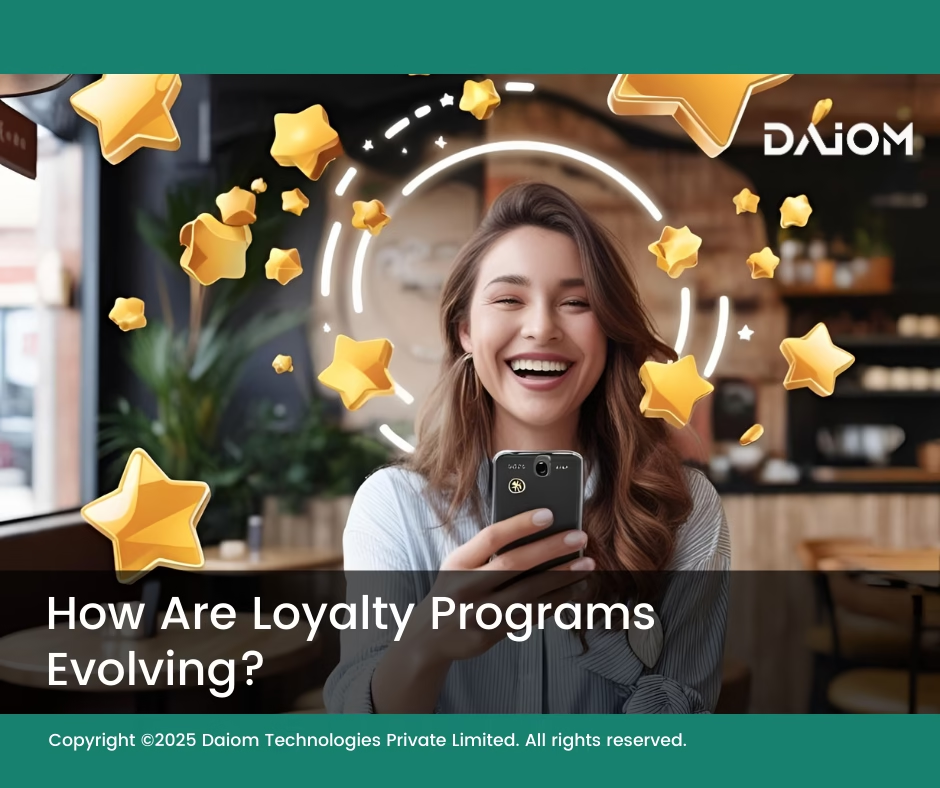I’ve always had a strong personal interest in loyalty programs—probably because my journey into the world of analytics began with them.
One of my earliest projects at American Express involved designing and executing loyalty campaigns, and since then, I’ve developed a lasting fascination with how these programs work, how they influence customer behavior, and how brands can use them as powerful tools for growth.
Over time, that curiosity turned into a habit—I’ve constantly explored different loyalty strategies, tested out programs across industries, and, I’ll admit, become a bit of a points junkie myself.
But have you ever wondered how loyalty programs even started?
They go way back—to the days of Diners Club and early credit cards. At that time, brands had no idea who their customers were. Especially before the internet, a customer could walk into a store, make a purchase, and walk out without leaving a trace.
Loyalty programs changed that. The primary objective of a loyalty program is to build loyalty, which helps increase Customer Lifetime Value (CLV).
Read more – All You Need To Know About Customer Lifetime Value (CLV)
Initially, the goal was to help brands identify their customers and track their purchase behavior over time. Once that data was in place, they would run targeted retention campaigns and encourage repeat purchases.
Today, loyalty programs are everywhere—from retail stores to large ecommerce groups. But many brands still struggle with a basic question: How do we know when we actually need a loyalty program?
This uncertainty often leads to poorly designed programs that don’t drive the intended outcomes. And that’s where strategy matters.
That’s what this blog is all about.
78% of consumers say loyalty programs make them more likely to do business with brands, and 73% are more likely to recommend brands with good loyalty programs.
A 2022 Bond Loyalty Report
Table of Contents
- Evolution of Loyalty Programs: Post-Internet and Mobile Age
- How Loyalty Programs Evolved Across Industries
- 5 Loyalty Program Evolution Trends You Should Know
- What Are the Different Types of Loyalty Programs Today?
- How Are Brands Using Experiences to Build Loyalty?
- How Has Quick Commerce Changed Short-Term Loyalty?
- Why Are Digital Loyalty Programs Gaining Popularity?
- What’s Next for Loyalty Programs?
- Conclusion
1. Evolution of Loyalty Programs: Post-Internet and Mobile Age
After the internet and mobile phones became common, loyalty programs changed a lot. In the beginning, most programs gave customers a loyalty ID or card to track points and purchases. Later, many brands switched from loyalty cards to using phone numbers as an easier way to identify customers.
It helped the brand to know who the customer is and differentiate between new, returning, and loyal customers for better targeting and personalized engagement.
With the rise of smartphones and apps, brands moved even further—ditching physical cards and loyalty IDs altogether. Today, digital identities power loyalty programs.
Customers use apps, email IDs, or mobile numbers to earn and redeem rewards seamlessly. This shift makes it easier for brands to connect with customers in real time, personalize offers, and keep loyalty programs simple and convenient.
Let’s look at how this transformation happened in three key stages:
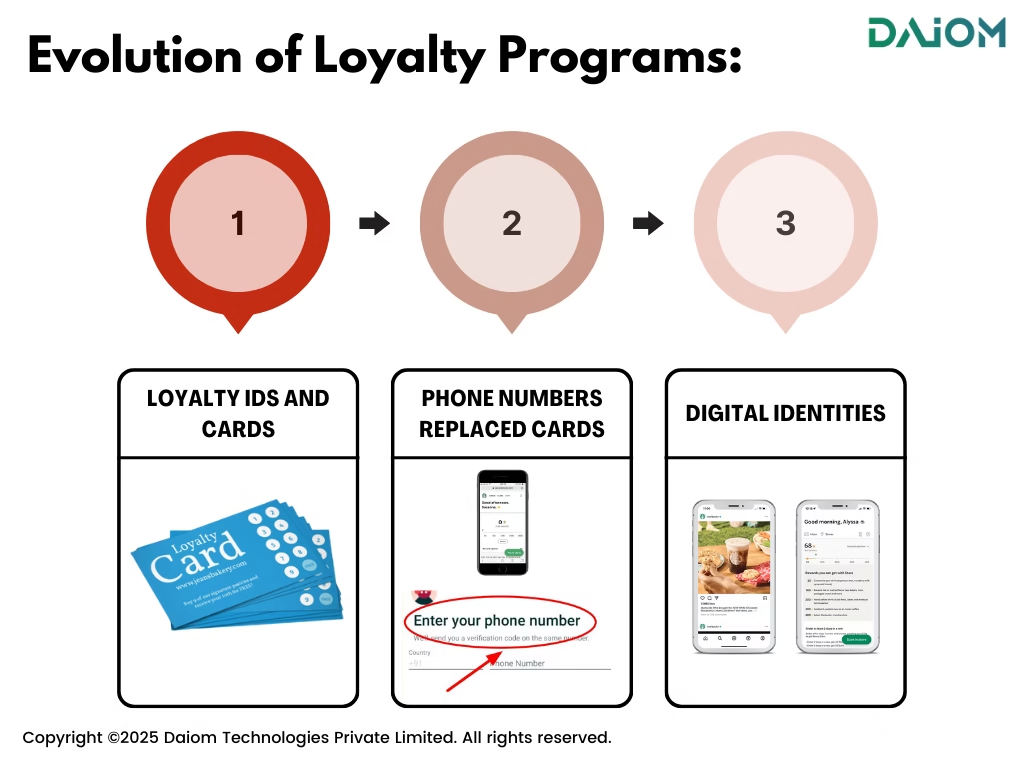
Stage 1: Loyalty IDs and Cards: When loyalty programs first went digital, most brands gave customers a loyalty ID or physical card to track points and purchases. This helped brands identify shoppers and reward them, but carrying cards was not always convenient.
Stage 2: Phone Numbers Replaced Cards: Later, many brands switched from loyalty cards to using phone numbers as a simpler way to recognize customers. This made it easier for customers to participate without needing a card, and brands could link purchases more directly.
Stage 3: Digital Identities and AI-Driven Loyalty: With the rise of smartphones and apps, loyalty programs moved beyond physical cards and phone numbers. Today, customers use apps, email IDs, or mobile numbers as digital identities to earn and redeem rewards seamlessly. Brands now use AI and data to personalize offers in real time, creating richer, more convenient loyalty experiences.
2. How Loyalty Programs Evolved Across Industries?
Different industries adopted them at different times—based on how well they knew their customers and how much they needed retention.
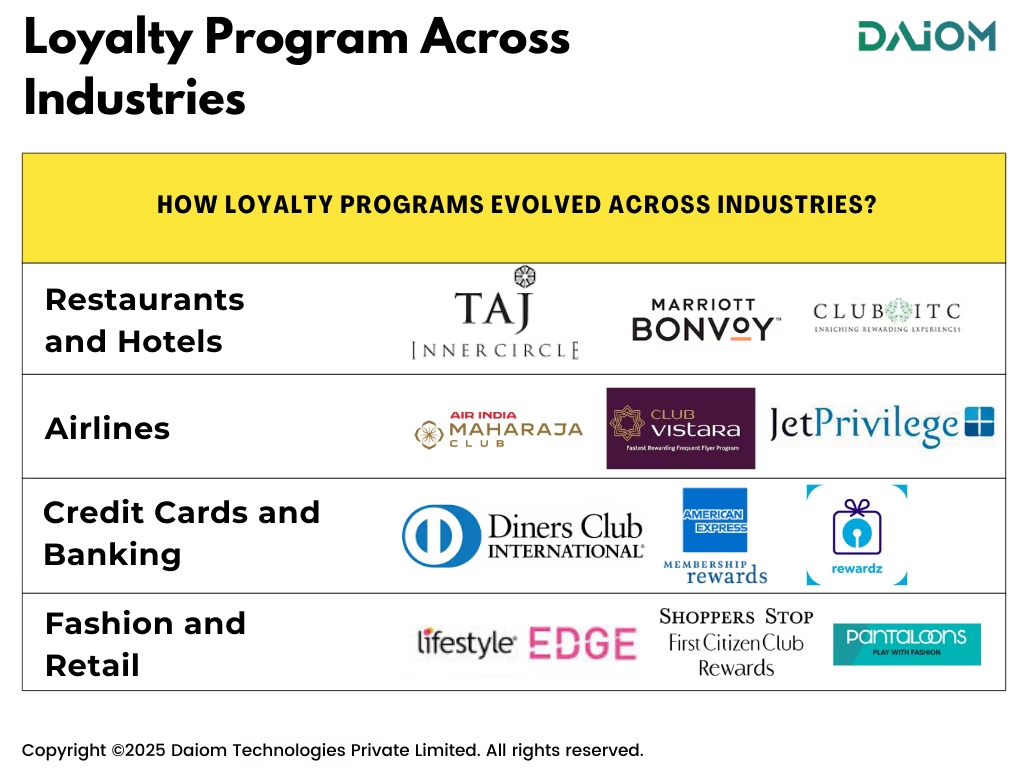
- Restaurants and Hotels: These were among the first to try loyalty tactics. The goal was simple: reward repeat rates and create habits. For example, Marriott Bonvoy offers points and exclusive member benefits across its global hotels, encouraging frequent stays. Taj InnerCircle rewards loyal guests with points, early check-ins, room upgrades, and special experiences, helping build lasting customer relationships.
- Airlines: Airlines took things a step further with frequent flyer programs. Air India’s Club Maharaja rewards frequent flyers with tiered benefits like lounge access, priority check-in, and bonus miles, making loyal customers feel valued.
- Credit Cards and Banking: This is where loyalty programs really scaled. Diners Club, launched in 1950, was one of the first charge cards—and it pioneered the idea of rewarding customers for their spending. Later, American Express and others followed with programs like Membership Rewards, using loyalty to drive card usage, retention, and brand preference.
- Fashion and Retail: These industries joined later. As competition and customer acquisition costs rose, they realized the value of keeping customers loyal. Loyalty programs helped them gather data, personalize experiences, and bring customers back—both in-store and online.
Loyalty is not won by being first. It is won by being the best.
– Stefan Persson, Chairman of H&M
3. 5 Loyalty Program Evolution Trends You Should Know
Loyalty programs have come a long way from their early days. Here are 5 big shifts that changed how brands think about loyalty:
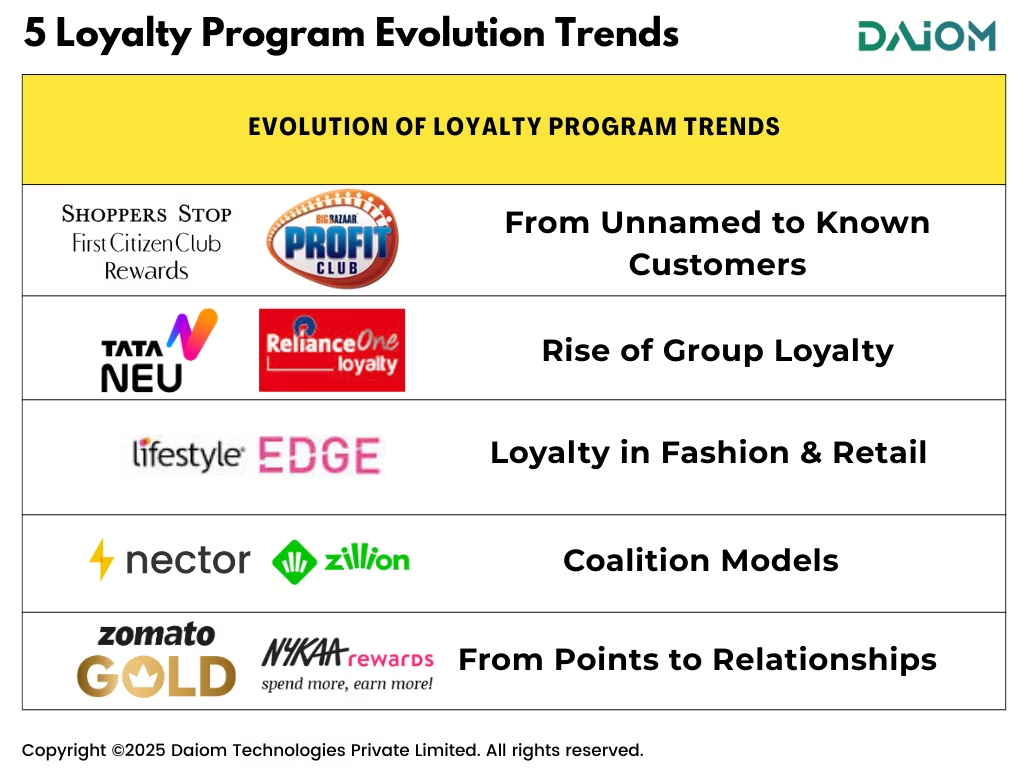
- From Unnamed to Known Customers: In the early days, brands had no clue who their customers were. Loyalty programs helped solve that—giving brands a way to capture customer identity and track behavior.
- Rise of Group Loyalty: Loyalty moved beyond just one brand. Programs like Reliance One let customers earn and redeem points across multiple brands under the same group—creating more value and increasing usage.
- Loyalty in Fashion & Retail: In fashion and retail, a major issue is low frequency. Many customers visit only once or twice a year. That makes it hard to build loyalty the traditional way.
- Coalition Models: When three or more brands work together in a shared program, customers come back more often. It increases the number of touchpoints and boosts the chance of repeat purchases.
- From Points to Relationships: The focus is no longer just on earning points. It’s about building deeper relationships with customers—through personalization, exclusive access, and better experiences.
4. What Are the Different Types of Loyalty Programs Today?
Loyalty programs today go far beyond just rewarding purchases. They’re designed to build deeper relationships and can take several forms. Here are the major types:
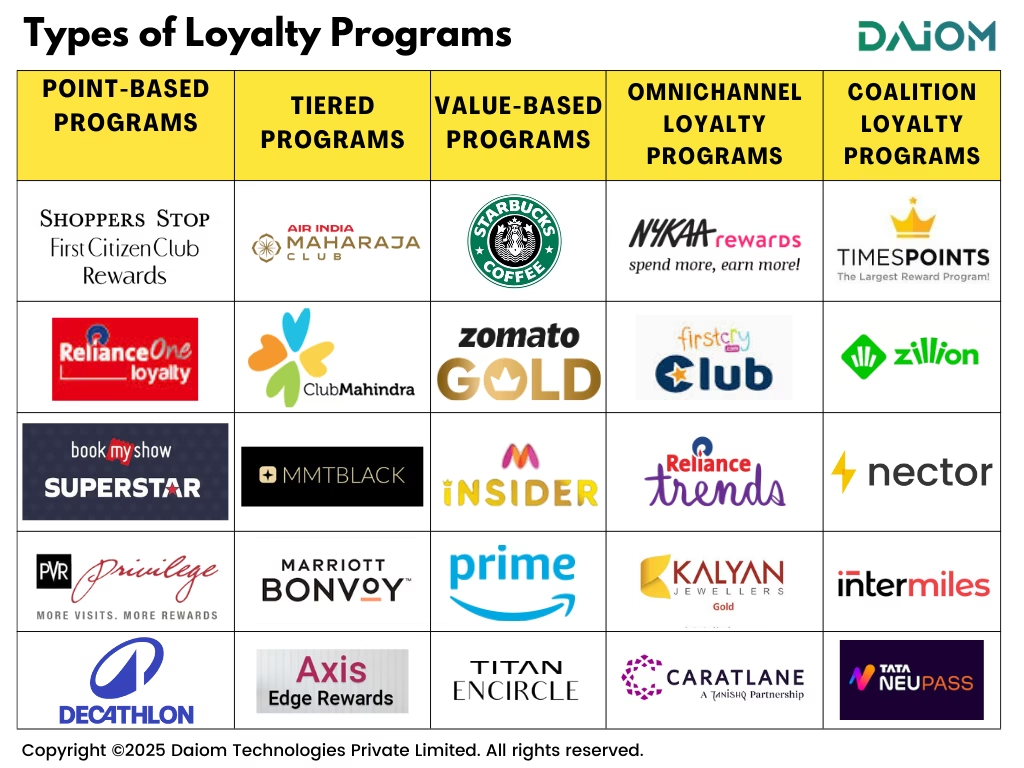
4.1 Point-Based Programs
The most popular format is point-based programs. Customers earn points for every purchase and redeem them later for discounts, freebies, or other benefits. It’s simple, scalable, and easy to use across industries.
Brands like BigBasket offer reward points for each purchase, and platforms like MobiKwik partner with brands such as IRCTC, Ola, and PVR Cinemas to let customers earn and redeem points across different services.
Read more – Points Vs. Cashback: What Drives Customer Loyalty?
4.2 Tiered Programs
Tiered programs offer increasing benefits as customers spend more or engage frequently. The more a customer interacts with the brand, the higher the tier they reach—and the better the rewards. This model creates a sense of achievement and exclusivity.
Club Maharaja by Air India is a strong example of a tiered loyalty program.
It offers multiple membership tiers—Maharaja Silver, Gold, and The Maharaja Club—each with increasing benefits based on a customer’s travel frequency and spending.
As flyers move up the tiers, they unlock exclusive privileges like:
- Priority check-in and boarding
- Lounge access
- Extra baggage allowance
- Complimentary upgrades
This not only rewards loyal flyers but also motivates regular travelers to engage more with the airline to reach the next tier.
4.3 Value-Based Loyalty Programs
Value-based subscription services offer points or other loyalty benefits designed to provide additional perks to customers, enhancing their overall experience and encouraging repeat business. Here’s an example:
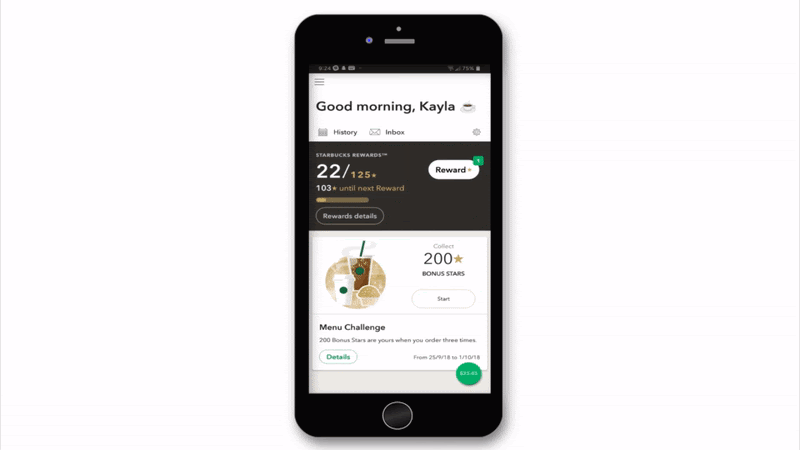
Read more – Everything You Need to Know About Repeat Customer Rate
These include both free and paid subscriptions.
- Free programs: Free loyalty programs like Sephora Beauty Insider, H&M Membership, and Starbucks Rewards let customers join at no cost and enjoy exclusive perks such as early access to sales, special discounts, and personalized offers.
- Paid programs: Examples in India include Amazon Prime, Lenskart Gold Membership, Zomato Gold, and Swiggy One — offering members added convenience, exclusive benefits, and long-term value for a recurring fee.
Additionally, cashback programs fall under value-based loyalty, where customers receive a percentage of their spend back as cash or wallet credit, incentivizing repeat purchases. This straightforward reward type is popular in fintech apps and e-commerce platforms.
4.4 Omnichannel Loyalty Programs
Omnichannel loyalty programs work across every brand touchpoint—stores, apps, websites, and social media. These programs let users earn rewards not just for purchases but also for writing reviews, referring friends, or engaging on digital platforms. They offer a seamless and personalized experience across the customer journey.
Brands like Nykaa and Croma do this well, offering unified points and rewards whether the customer shops online or offline.
4.5 Coalition Loyalty Programs
Coalition loyalty programs bring multiple brands together under one loyalty umbrella. This lets customers earn and redeem points across different partners, making rewards more flexible and valuable. These programs boost customer engagement by offering more choices and seamless experiences across brands.
Examples: Tata Neu in India combines rewards from Tata’s wide range of brands, letting users earn and redeem NeuCoins across shopping, dining, travel, and more. Moreover, there is Shukran which is the Landmark Group’s award-winning loyalty program that is designed to offer you a more rewarding shopping experience when you shop at our Group brands and partner brands.
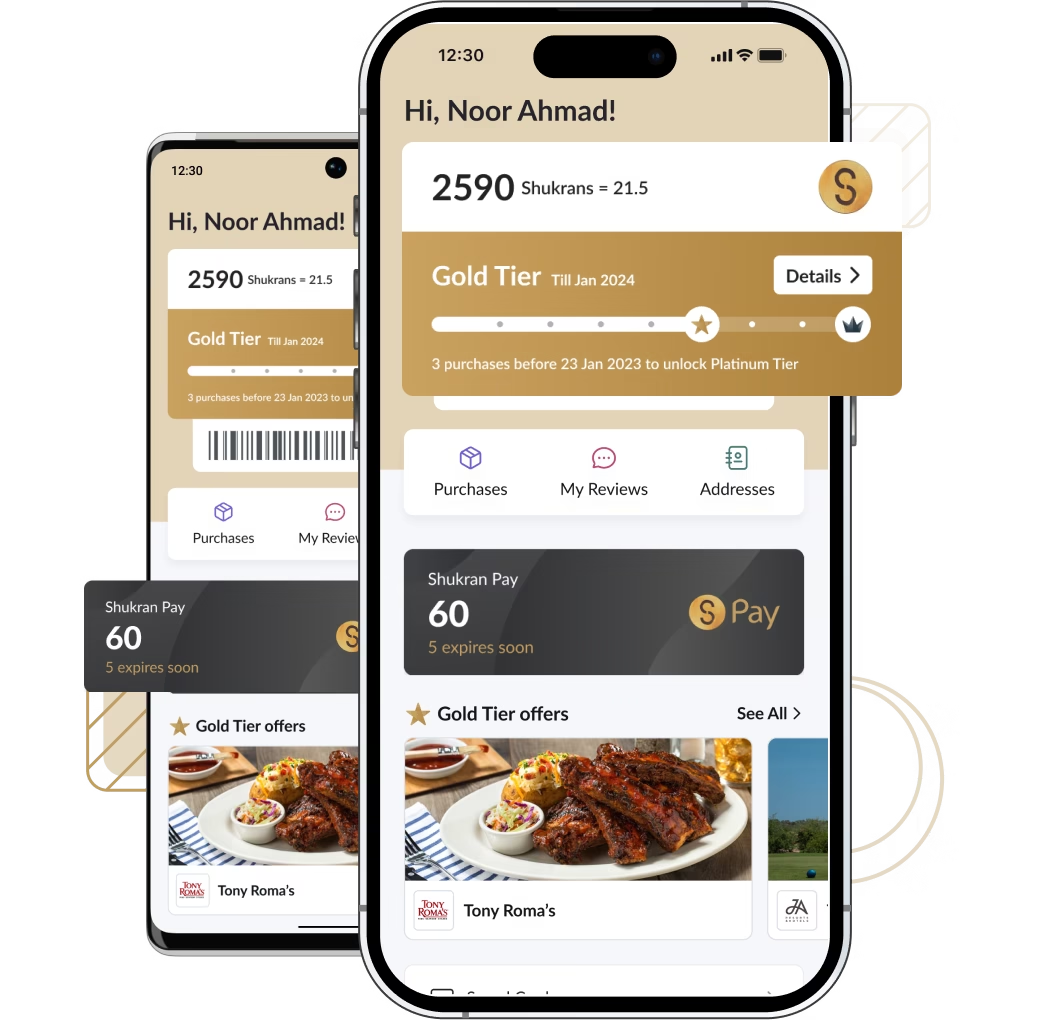
5. How Are Brands Using Experiences to Build Loyalty?
Loyalty today goes beyond rewards—it’s about how a brand makes a customer feel.
Experiential loyalty programs are designed around this idea. Instead of just offering points or cashback, brands now offer memorable, exclusive experiences. These could be VIP events, early access to product launches, invite-only previews, or premium services. The goal is to make customers feel valued and special.
Several brands are leading the way:
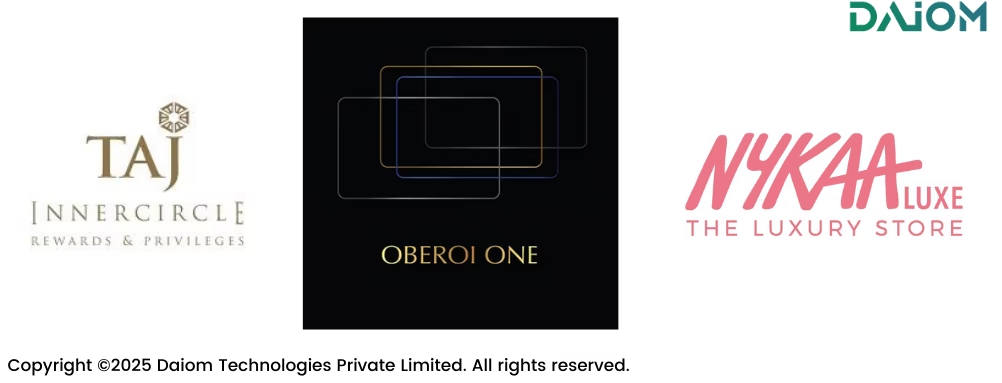
- Taj InnerCircle offers curated stays, room upgrades, early check-ins, and personalized touches to frequent guests—turning every stay into a special one.
- Nykaa Luxe Loyalty gives access to beauty masterclasses, exclusive launch previews, and curated experiences with top makeup artists — making members feel part of an insider community.
- The Oberoi One helps members enjoy special privileges like complimentary room upgrades, late checkouts, spa discounts, and personalized dining — making every stay feel elite.
Such experiences strengthen emotional connections, build brand prestige, and drive long-term loyalty—something points alone can’t achieve.
6. How Has Quick Commerce Changed Short-Term Loyalty?
While quick commerce platforms are charging fees and offering various rewards, the overall value proposition remains unclear to many customers.
From a user’s perspective, it’s hard to understand the real benefits or what makes staying loyal worthwhile.
It feels like the platforms are experimenting with multiple offers and discounts, which shows they’re trying to find what works.
However, without a clear and consistent strategy, this confusion could impact long-term loyalty. They need to settle on a focused approach soon to truly connect with customers.

6.1 What Makes People Loyal?
Many loyalty programs offer cashback or discount vouchers, while some provide special experiences. Getting ₹100 cashback can make people happy for a moment—that instant reward feels good.
But the real value of loyalty programs lies in the experiences they create. For example, my best memories are from a free stay at the Taj or a business class ticket voucher. What I don’t remember are small cashback amounts like ₹3 or ₹5. Instant rewards may feel nice briefly, but they don’t build lasting memories or true loyalty.
7. Why Are Digital Loyalty Programs Gaining Popularity?
Digital Loyalty programs help in making loyalty effortless. They are designed to fit seamlessly into a customer’s daily life. With mobile apps, digital wallets, and e-commerce platforms, earning or redeeming rewards is now just a tap away.
Whether you’re shopping online, paying through UPI, or visiting a store, everything is synced across channels. This makes the experience smooth, fast, and convenient.
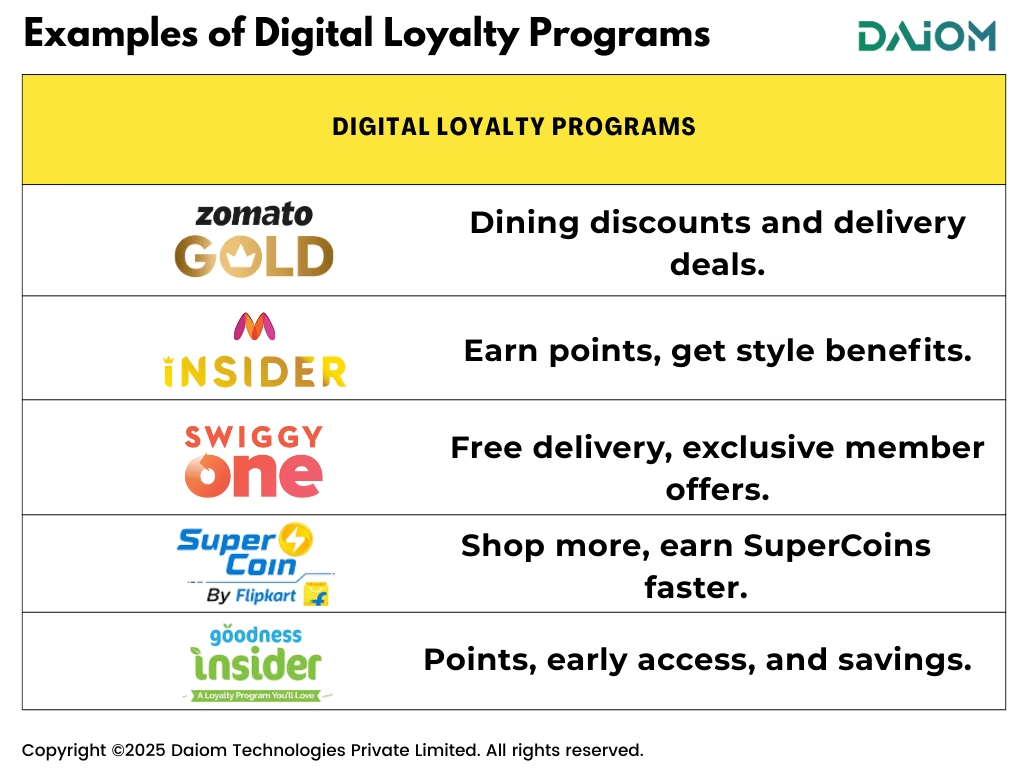
Brands like Myntra, Zomato, and Swiggy have mastered digital loyalty. You earn points, unlock perks, or get exclusive deals—all within the app. No cards. No codes. Just seamless digital rewards.
What’s more, gamification is changing the game. Many platforms now use badges, levels, and challenges to keep users hooked. For example, Flipkart SuperCoins and CRED Coins let users play games, spin wheels, or complete tasks to earn extra points—making loyalty fun, not just functional.
8. What’s Next for Loyalty Programs?
Loyalty programs are evolving fast. It’s no longer just about points and rewards. The future lies in using tech and data to create smarter, more personal experiences that adapt in real time. Here’s what’s coming next:
- AI-powered personalization: Brands will predict what you want before you ask—using your past purchases and behavior.
- Real-time rewards: Offers will change instantly based on your actions, like surprise discounts if you’re about to leave without buying.
- Integration with messaging apps: Loyalty updates and redemptions will happen on platforms like WhatsApp—no extra app needed.
- First-party data focus: With cookie restrictions, brands will use data collected directly from customers to create hyper-personal offers.
9. Conclusion
Loyalty programs are no longer just about points. They are about personalization, experience, and community. As consumer needs change, brands are finding smarter, more engaging ways to build long-term relationships.
Whether it’s through a gamified app, a cause you care about, or a VIP concert invite—today’s loyalty programs are about making you feel seen and valued.
And that’s what true loyalty is all about.
If you’d like to discuss how we can help enhance and optimize your Omnichannel strategies, we’d be happy to set up a consultation call. Feel free to reach out to us at alibha@daiom.in
For more informative content and blog, follow and stay tuned to DAiOM.
Subscribe to our NEWSLETTER!


